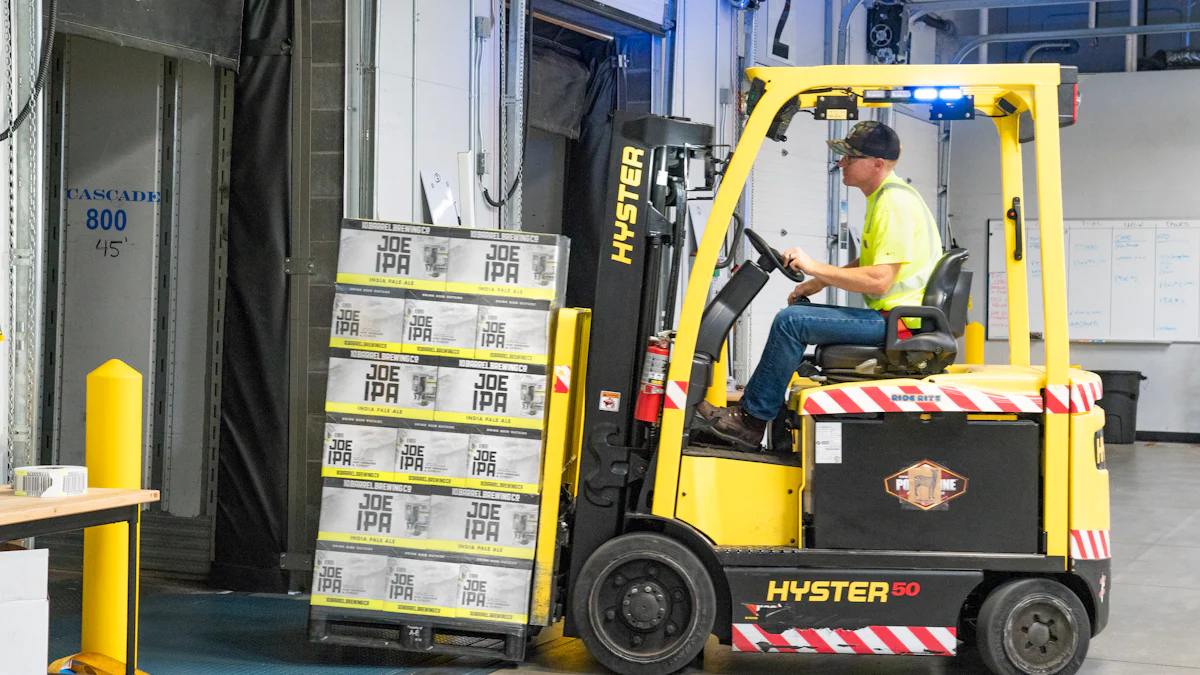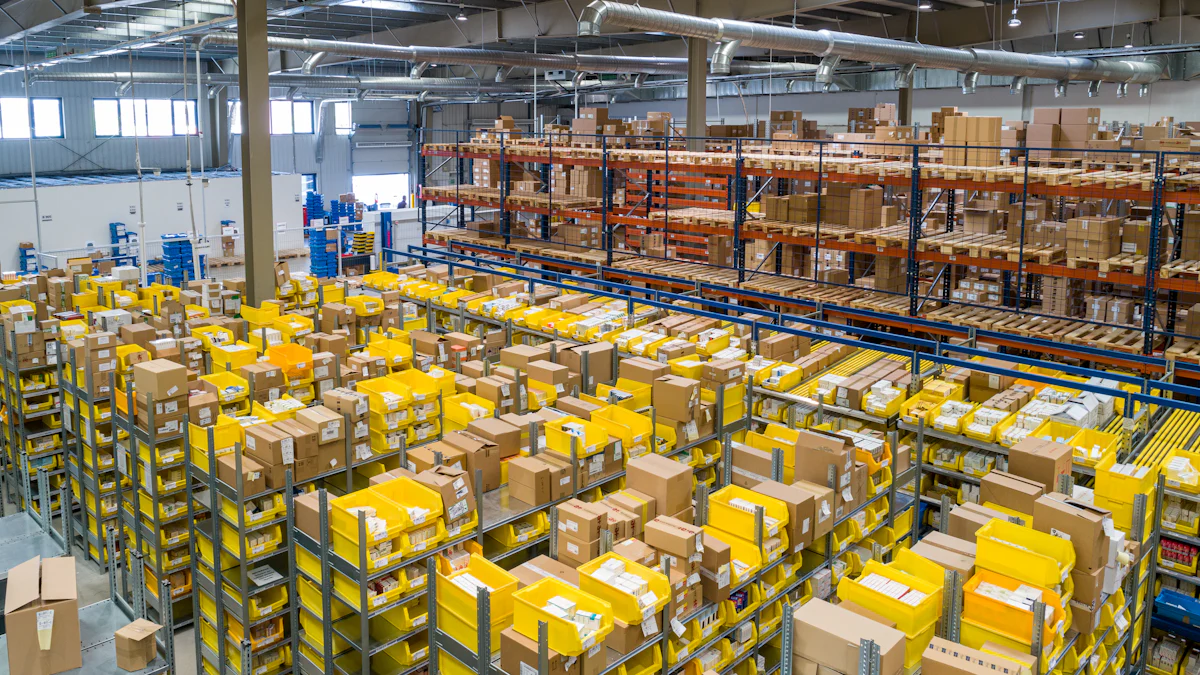
Pallet stackers, also known as platform truck pallet stacking trucks, are essential equipment in warehouses and industrial settings. Selecting the right pallet jacks is crucial for optimizing efficiency and safety in material handling operations. This blog provides a comprehensive guide to help you navigate the diverse world of pallet stackers, from understanding their types to key considerations for selection. Let’s delve into the intricate details of pallet stackers to empower your decision-making process.
Understanding Pallet Stackers

When considering pallet jacks, it’s essential to grasp the significance of their role in warehouse operations. These tools are not merely equipment; they are pivotal for efficient material handling. Understanding the nuances of pallet stackers can lead to informed decisions that streamline processes and enhance productivity.
What is a Pallet Stacker?
Basic definition and functionality
A pallet stacker serves as a versatile tool designed to lift and stack pallets efficiently. Its primary function revolves around lifting loads, enabling seamless stacking at various heights within a warehouse environment. By comprehending its fundamental purpose, users can harness its capabilities effectively.
Key components and features
Within the realm of pallet stackers, several key components contribute to their operational prowess. From sturdy frames to ergonomic handles, each element plays a crucial role in ensuring smooth functionality. Understanding these components equips users with the knowledge needed to maximize the potential of their pallet jacks.
Types of Pallet Stackers
Manual Pallet Stackers
Manual pallet stackers offer a hands-on approach to lifting and moving loads, providing a cost-effective solution for businesses with varying material handling needs. Their simplicity in design coupled with manual operation makes them versatile tools for small-scale operations.
Semi-Electric Pallet Stackers
Incorporating elements of manual and electric functionalities, semi-electric pallet stackers strike a balance between efficiency and user control. These models are ideal for environments where occasional power assistance is required without compromising manual handling capabilities.
Fully Electric Pallet Stackers
Fully electric pallet stackers represent the pinnacle of automation in material handling. With powered lifting and maneuvering capabilities, these models excel in high-demand settings where efficiency and precision are paramount. Their electric nature enhances productivity while reducing physical strain on operators.
Counterbalance Pallet Stackers
Designed to counterbalance heavy loads, counterbalance pallet stackers provide stability during lifting and stacking operations. Their unique construction ensures safe handling of uneven or bulky items, making them indispensable tools in warehouses with diverse load requirements.
Benefits of Using Pallet Stackers
Efficiency and productivity
By leveraging the capabilities of pallet jacks, businesses can significantly boost their operational efficiency. The seamless movement of goods facilitated by these tools streamlines workflows, leading to increased productivity levels within warehouse settings.
Safety and ergonomics
Safety remains a top priority in any industrial environment, and pallet stackers are no exception. Their ergonomic designs prioritize user comfort while minimizing the risk of workplace injuries associated with manual material handling tasks.
Cost-effectiveness
Investing in the right type of pallet stacker translates into long-term cost savings for businesses. Whether opting for manual or electric models, the efficiency gains achieved through streamlined material handling processes contribute to overall cost-effectiveness.
Key Considerations for Selection
Load Capacity and Size
Determining load requirements
- Evaluate the weight capacity needed based on the heaviest loads typically handled in your operations.
- Consider potential growth in load requirements to ensure the pallet stacker can accommodate future demands.
Size and dimensions of pallets
- Measure the standard size of pallets used in your facility to match with the stacker’s dimensions.
- Ensure that the pallet stacker’s forks align correctly with the width and length of your pallets for seamless operation.
Lift Height and Reach
Assessing vertical storage needs
- Determine the maximum height at which you need to stack or retrieve pallets within your warehouse.
- Factor in any overhead obstructions or clearance requirements when assessing lift height capabilities.
Maximum lift height considerations
- Compare the maximum lift height of different pallet stacker models to find one that meets your vertical storage needs.
- Ensure that the stacker’s lift height exceeds your highest shelving levels for efficient stacking operations.
Power Source and Usage
Manual vs. electric options
- Assess your operational needs to decide between manual or electric pallet stackers based on workload and efficiency requirements.
- Consider the convenience of electric models for frequent use versus manual options for occasional tasks.
Frequency and duration of use
- Determine how often and for how long the pallet stacker will be in operation during daily tasks.
- Calculate battery life or charging intervals needed for electric models to sustain continuous usage throughout shifts.
Maneuverability and Space Constraints
Turning radius and aisle width
- Consider the turning radius of the pallet stacker to ensure smooth navigation within confined spaces.
- Evaluate the aisle width in your facility to guarantee the pallet stacker can maneuver effectively between shelves.
Space availability in the facility
- Assess the available space in your warehouse or industrial setting to determine if it can accommodate the dimensions and operational needs of the pallet stacker.
- Ensure there is ample room for safe movement and operation of the pallet stacker without hindrances.
Practical Applications and Use Cases

Warehousing and Distribution
Common scenarios and benefits
- Streamlining warehouse operations with the utilization of platform truck pallet stacking trucks.
- Enhancing inventory management through efficient stacking and retrieval processes.
- Optimizing storage space by utilizing vertical stacking capabilities of pallet stackers.
- Improving workflow efficiency by reducing manual handling tasks within distribution centers.
Case studies and examples
“In a large distribution center, the implementation of platform truck pallet stacking trucks resulted in a 30% increase in daily throughput. By efficiently stacking and retrieving pallets, the facility experienced significant time savings in material handling processes.”
Manufacturing and Production
Integration into production lines
- Incorporating platform truck pallet stacking trucks into assembly lines for seamless material flow.
- Facilitating just-in-time production strategies by ensuring timely delivery of materials to manufacturing stations.
- Enhancing production efficiency by reducing downtime associated with manual material handling tasks.
Efficiency improvements
“A manufacturing plant integrated platform truck pallet stacking trucks into its production line, leading to a 25% decrease in material handling time. The streamlined process resulted in improved operational efficiency and reduced labor costs.”
Retail and E-commerce
Stocking and inventory management
- Optimizing retail stocking procedures through the use of platform truck pallet stacking trucks for organized storage.
- Ensuring accurate inventory counts by efficiently moving products within retail spaces.
- Minimizing stockouts and overstock situations through precise inventory management practices.
Enhancing customer service
“In the e-commerce sector, the implementation of platform truck pallet stacking trucks revolutionized order fulfillment processes. By expediting stocking procedures, online retailers were able to meet customer demands promptly, resulting in enhanced customer satisfaction levels.”
- In summary, understanding the diverse types and benefits of pallet stackers is crucial for efficient material handling operations.
- Proper selection based on load capacity, lift height, power source, and maneuverability can significantly impact warehouse productivity.
- It is essential to assess specific operational needs meticulously before investing in a pallet stacker to ensure seamless integration and optimal performance.
Post time: Jun-27-2024
